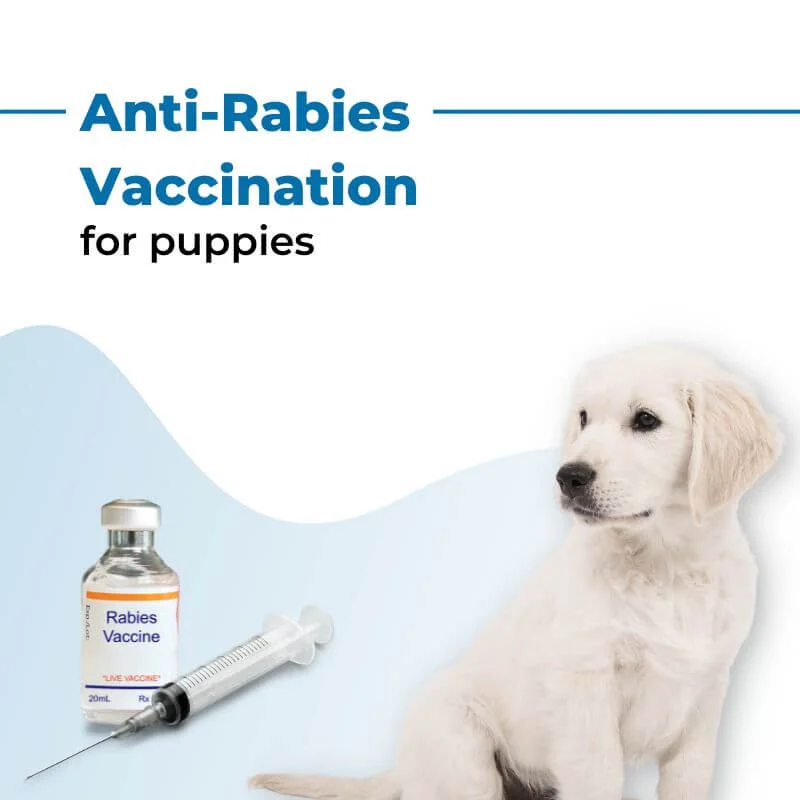When it comes to safeguarding our pets, the Anti-Rabies Vaccine for Dogs is one of the most critical vaccinations. Rabies is a deadly viral infection affecting the nervous system, and it’s almost always fatal once symptoms appear. This comprehensive guide will explain why this vaccine is essential, the recommended vaccination schedule, and what you need to know about the process.
Importance of the Anti-Rabies Vaccine for Dogs
The Anti-Rabies Vaccine for Dogs doesn’t just protect pets; it protects humans too. Rabies is zoonotic, meaning it can be transferred from animals to humans, usually through a bite. In many places, it’s a legal requirement for dogs to have this vaccination due to the severe health risks rabies poses.
Key Benefits of the Anti-Rabies Vaccine
- Protects Against a Fatal Disease: Rabies is almost always fatal. Vaccinating ensures your dog is safe from this serious illness.
- Prevents Transmission to Humans: Rabies can spread to humans, and by vaccinating dogs, you contribute to community safety.
- Required by Law in Many Areas: Many regions legally mandate this vaccine, making it necessary to keep pets vaccinated.
Vaccination Schedule for the Anti-Rabies Vaccine
Vaccinating at the right time is key to maintaining your dog’s immunity.
Puppy Vaccination
Puppies typically receive their first dose of the Anti-Rabies Vaccine for Dogs around 12–16 weeks of age. This dose provides initial protection and begins the process of lifelong immunity.
Adult Dogs
After their first dose, dogs generally need a booster shot one year later. Afterward, the booster schedule may vary:
- 1-Year Vaccine: Annual boosters are recommended.
- 3-Year Vaccine: After an initial dose, this vaccine lasts three years in most cases.
Consulting Your Veterinarian
It’s essential to work with a vet to establish a specific schedule tailored to your dog. They’ll help decide whether a one-year or three-year vaccination is appropriate.
Types of Anti-Rabies Vaccines for Dogs
There are generally two types of Anti-Rabies Vaccine for Dogs: the one-year vaccine and the three-year vaccine.
- 1-Year Rabies Vaccine: Requires annual boosters and is commonly administered for high-risk dogs or those with specific travel requirements.
- 3-Year Rabies Vaccine: Offers protection for three years and is generally used after a dog has received at least one annual vaccine.
How Does the Anti-Rabies Vaccine for Dogs Work?
The Anti-Rabies Vaccine for Dogs introduces an inactive form of the virus into the dog’s body, which doesn’t cause the disease but helps the immune system recognize and fight it. By producing antibodies, your dog’s body can effectively respond if exposed to the live virus later.
Possible Side Effects of the Anti-Rabies Vaccine for Dogs
While most dogs tolerate the Anti-Rabies Vaccine for Dogs well, mild side effects may occur.
Common Side Effects
- Mild fever or fatigue for a day
- Temporary swelling at the injection site
- Slight decrease in appetite, usually resolving quickly
Severe Reactions
In rare cases, dogs might have an allergic reaction. Look out for symptoms like persistent swelling, itching, or breathing difficulty, and contact your vet if you observe any of these signs.

Myths Surrounding the Anti-Rabies Vaccine for Dogs
Understanding the truth about rabies vaccination is important. Here are a few myths:
- Myth: “Indoor dogs don’t need the vaccine.”
Truth: Even indoor dogs may encounter rabies if exposed to infected animals during brief outdoor activities or through small animals like bats. - Myth: “The vaccine can give dogs rabies.”
Truth: This is impossible, as the Anti-Rabies Vaccine for Dogs contains inactivated or killed virus material that cannot cause rabies.
Caring for Your Dog After the Anti-Rabies Vaccine
After receiving the Anti-Rabies Vaccine for Dogs, your pet may require minimal care. Keep them calm, monitor for any side effects, and provide plenty of water. Avoid high-energy activities immediately following the vaccination.
Frequently Asked Questions
Q: Why is the Anti-Rabies Vaccine for Dogs legally required?
Rabies is a deadly disease that can transfer from dogs to humans. To protect public health, many regions require all dogs to be vaccinated.
Q: At what age should a dog receive the first rabies vaccine?
Puppies typically receive their first Anti-Rabies Vaccine for Dogs dose between 12–16 weeks.
Q: Can the Anti-Rabies Vaccine for Dogs cause aggression?
The vaccine itself doesn’t cause aggression, though some dogs may feel slightly unwell after the shot, which can lead to temporary changes in behavior.
Q: How much does the Anti-Rabies Vaccine for Dogs cost?
Prices vary by region and veterinarian but generally range from $15 to $50.
Q: What if my dog misses a rabies booster?
Contact your vet to reschedule as soon as possible. Delaying boosters increases the risk of contracting and spreading rabies.


